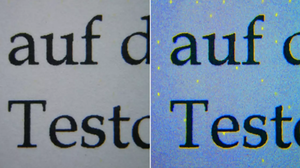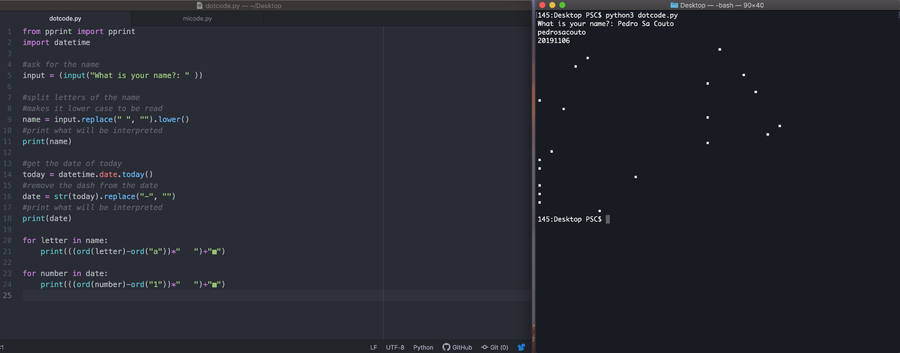User:Pedro Sá Couto/MIC: Difference between revisions
No edit summary |
|||
| Line 33: | Line 33: | ||
=First Working Prototype= | =First Working Prototype= | ||
[[File:micoder2.png|900px|]] | [[File:micoder2.png|900px|]] | ||
=First Sketch= | =First Sketch= | ||
| Line 85: | Line 90: | ||
--------------------------------------------------------------------------- | --------------------------------------------------------------------------- | ||
</pre> | </pre> | ||
=''deda'' Toolkit= | =''deda'' Toolkit= | ||
https://github.com/dfd-tud/deda | <small>https://github.com/dfd-tud/deda</small> | ||
Document Colour Tracking Dots, or yellow dots, are small systematic dots which encode information about the printer and/or the printout itself.<br> | <small>Document Colour Tracking Dots, or yellow dots, are small systematic dots which encode information about the printer and/or the printout itself.<br> | ||
This process is integrated in almost every commercial colour laser printer.<br> | This process is integrated in almost every commercial colour laser printer.<br> | ||
This means that almost every printout contains coded information about the source device, such as the serial number. | This means that almost every printout contains coded information about the source device, such as the serial number. | ||
| Line 99: | Line 101: | ||
On the one hand, this tool gives the possibility to read out and decode these forensic features and on the other hand, it allows anonymisation to prevent arbitrary tracking. | On the one hand, this tool gives the possibility to read out and decode these forensic features and on the other hand, it allows anonymisation to prevent arbitrary tracking. | ||
If you use this software, please cite the paper: Timo Richter, Stephan Escher, Dagmar Schönfeld, and Thorsten Strufe. 2018. Forensic Analysis and Anonymisation of Printed Documents. In Proceedings of the 6th ACM Workshop on Information Hiding and Multimedia Security (IH&MMSec '18). ACM, New York, NY, USA, 127-138. DOI: https://doi.org/10.1145/3206004.3206019 | If you use this software, please cite the paper: Timo Richter, Stephan Escher, Dagmar Schönfeld, and Thorsten Strufe. 2018. Forensic Analysis and Anonymisation of Printed Documents. In Proceedings of the 6th ACM Workshop on Information Hiding and Multimedia Security (IH&MMSec '18). ACM, New York, NY, USA, 127-138. DOI: https://doi.org/10.1145/3206004.3206019</small> | ||
Revision as of 16:19, 4 December 2019
Machine Identification Code
What is the Machine Identification Code
The Machine Identification Code is appended to every printed page. When printing, a pattern of dots is added. These are almost imperceptible yellow dots carrying information as the date of print, time and the serial number of the machine. This made me rethink what did it mean to publish in print, how safe is it, and how it might affect the ones who depend on printed forms of publishing.
- AN ANONYMISATION APPROACH
- Tracking dots on a sheet reveal information about the printer and are therefore a lack of privacy. Tracking dots information have no controlled access and can theoretically be read and decoded by anyone. It is possible to conclude the printer of a sheet which is often owned by the author. This would be a disaster e.g. in case the sheet is a critical leaflet about the government in a dictatorship. For this reason, we introduce methods for removing tracking data from scanned prints and for masking tracking data on prints. Each anonymisation method was successfully tested using our dedatoolkit.
- Richter, T., Escher, S., Schönfeld, D., et al. (2018) Forensic Analysis and Anonymisation of Printed Documents. In 14 June 2018. pp. 127–138. doi:10.1145/3206004.3206019.
Understanding if they are real
I was not able to identify them personally even though they appear to be a reality. There are numerous people apparently spotting them and online there is a lot of discussion about them. I tested methods to identify with UV light, with different printers, from HP to Canon, from Inkjet to Lasers printers. I scanned the pages with 1200 dpi, inverted and follow almost every tutorial I found available online.
This is not to say they don't exist but is a disclaimer that I was not able to come across them.

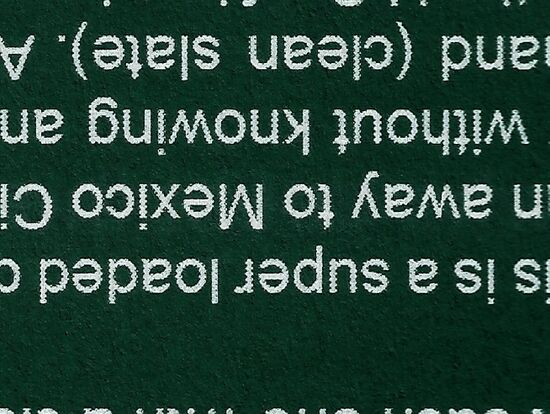
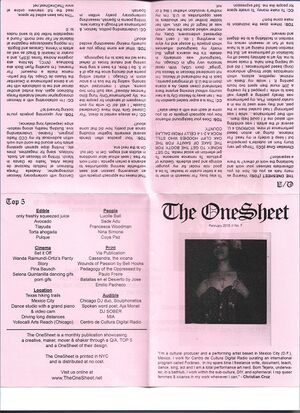
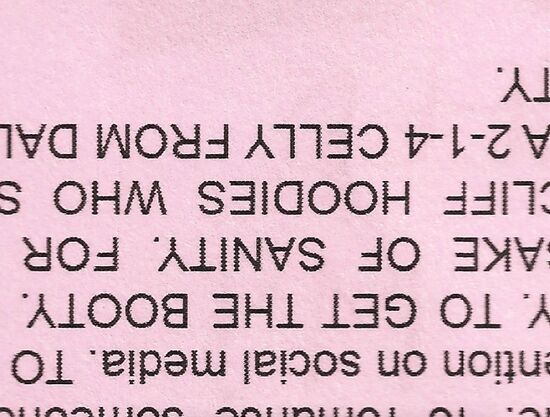
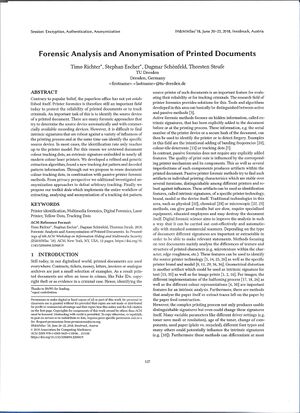
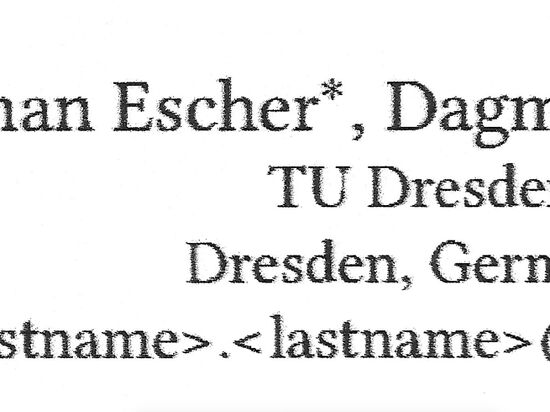
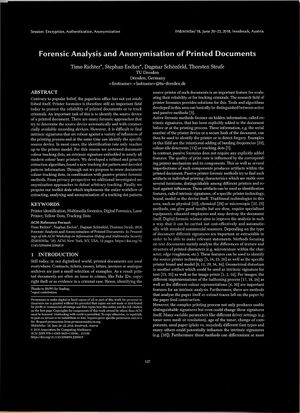
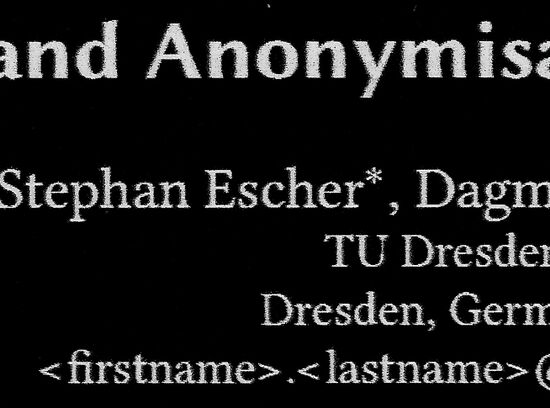
First Working Prototype
First Sketch
Create a canvas
↓
Ask for a raw input (PEDRO)
↓
This would be translated into 5 coordinates
↓
Get the date (04-11-2019)
↓
--------------------------------------------------------------------------- | | | A B C D E F G H I J K L M N O P Q R T U V X Y Z 1 2 3 4 5 6 7 8 9 0 | | 1 | | 2 | | 3 | | 4 | | 5 | | 6 | | 7 | | 8 | | 9 | | 10 | | | ---------------------------------------------------------------------------
Pinpoint the coordinates
--------------------------------------------------------------------------- | | | A B C D E F G H I J K L M N O P Q R T U V X Y Z 1 2 3 4 5 6 7 8 9 0 | | 1 º | | 2 º | | 3 º | | 4 º | | 5 º | | 6 º | | 7 º | | 8 º | | 9 º | | 10 º | | 11 º | | 12 º | | 13 º | | | ---------------------------------------------------------------------------
deda Toolkit
https://github.com/dfd-tud/deda
Document Colour Tracking Dots, or yellow dots, are small systematic dots which encode information about the printer and/or the printout itself.
This process is integrated in almost every commercial colour laser printer.
This means that almost every printout contains coded information about the source device, such as the serial number.
On the one hand, this tool gives the possibility to read out and decode these forensic features and on the other hand, it allows anonymisation to prevent arbitrary tracking.
If you use this software, please cite the paper: Timo Richter, Stephan Escher, Dagmar Schönfeld, and Thorsten Strufe. 2018. Forensic Analysis and Anonymisation of Printed Documents. In Proceedings of the 6th ACM Workshop on Information Hiding and Multimedia Security (IH&MMSec '18). ACM, New York, NY, USA, 127-138. DOI: https://doi.org/10.1145/3206004.3206019

